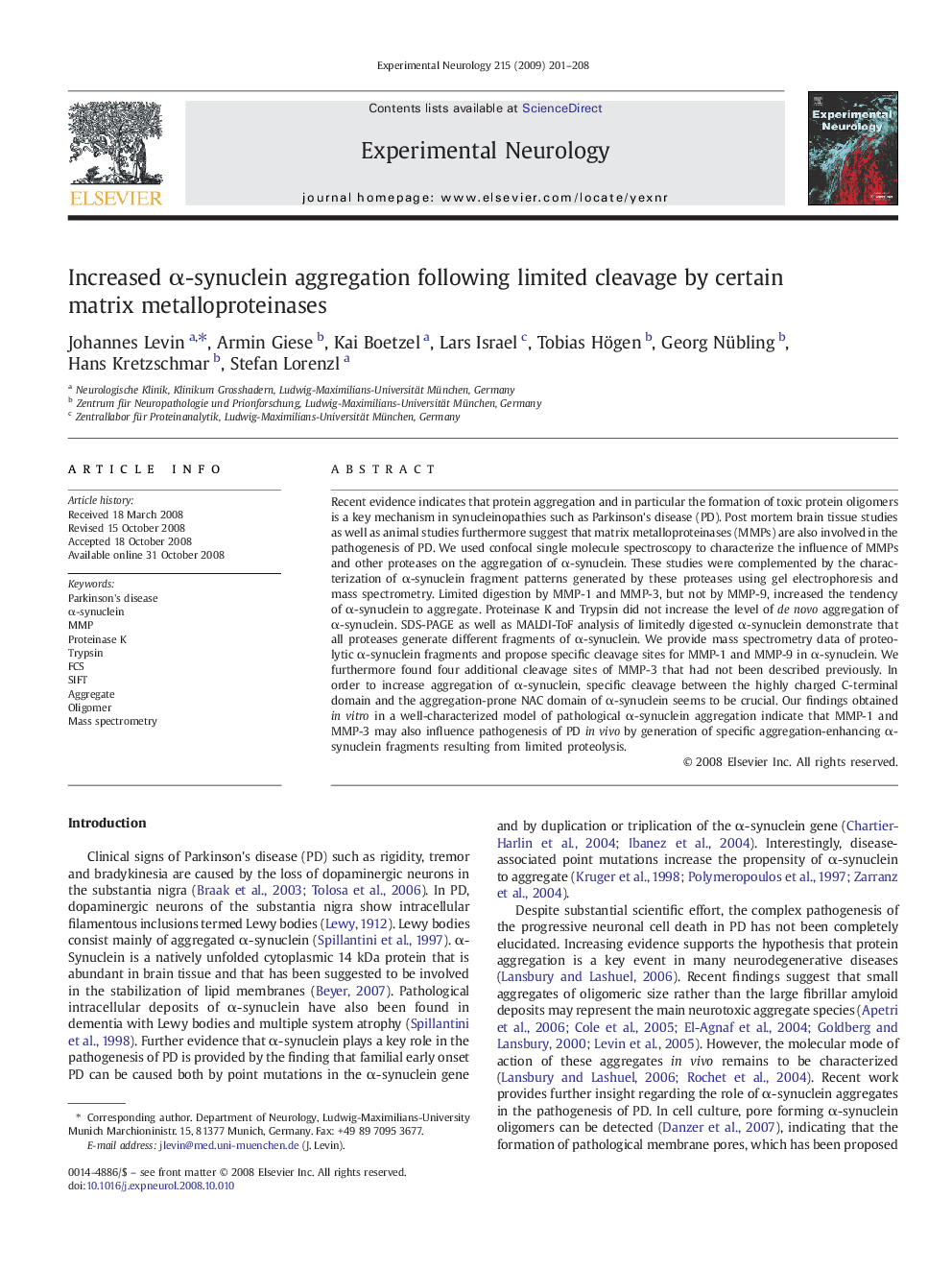| کد مقاله | کد نشریه | سال انتشار | مقاله انگلیسی | نسخه تمام متن |
|---|---|---|---|---|
| 3056404 | 1186565 | 2009 | 8 صفحه PDF | دانلود رایگان |

Recent evidence indicates that protein aggregation and in particular the formation of toxic protein oligomers is a key mechanism in synucleinopathies such as Parkinson's disease (PD). Post mortem brain tissue studies as well as animal studies furthermore suggest that matrix metalloproteinases (MMPs) are also involved in the pathogenesis of PD. We used confocal single molecule spectroscopy to characterize the influence of MMPs and other proteases on the aggregation of α-synuclein. These studies were complemented by the characterization of α-synuclein fragment patterns generated by these proteases using gel electrophoresis and mass spectrometry. Limited digestion by MMP-1 and MMP-3, but not by MMP-9, increased the tendency of α-synuclein to aggregate. Proteinase K and Trypsin did not increase the level of de novo aggregation of α-synuclein. SDS-PAGE as well as MALDI-ToF analysis of limitedly digested α-synuclein demonstrate that all proteases generate different fragments of α-synuclein. We provide mass spectrometry data of proteolytic α-synuclein fragments and propose specific cleavage sites for MMP-1 and MMP-9 in α-synuclein. We furthermore found four additional cleavage sites of MMP-3 that had not been described previously. In order to increase aggregation of α-synuclein, specific cleavage between the highly charged C-terminal domain and the aggregation-prone NAC domain of α-synuclein seems to be crucial. Our findings obtained in vitro in a well-characterized model of pathological α-synuclein aggregation indicate that MMP-1 and MMP-3 may also influence pathogenesis of PD in vivo by generation of specific aggregation-enhancing α-synuclein fragments resulting from limited proteolysis.
Journal: Experimental Neurology - Volume 215, Issue 1, January 2009, Pages 201–208